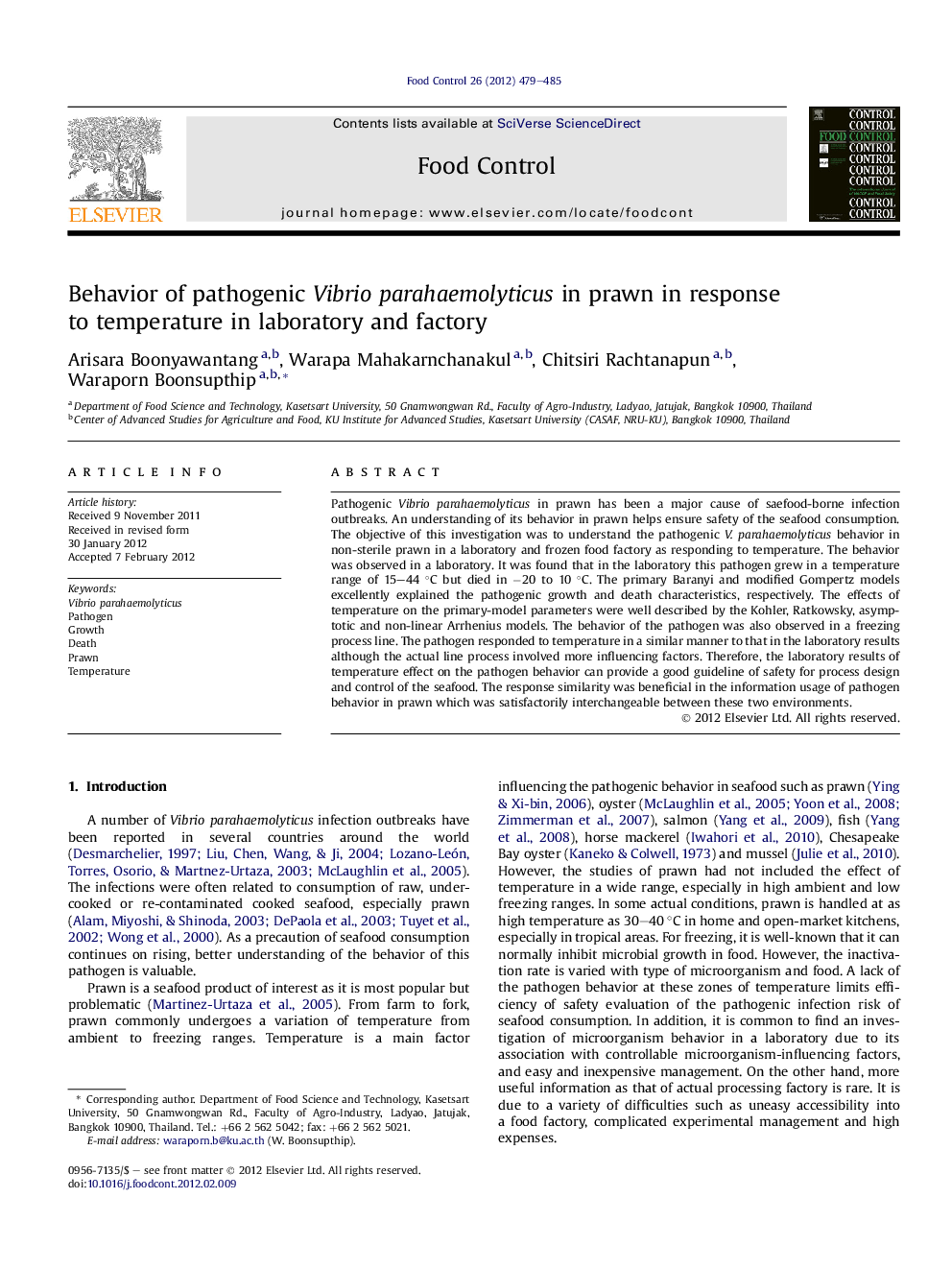| Article ID | Journal | Published Year | Pages | File Type |
|---|---|---|---|---|
| 6393901 | Food Control | 2012 | 7 Pages |
Pathogenic Vibrio parahaemolyticus in prawn has been a major cause of saefood-borne infection outbreaks. An understanding of its behavior in prawn helps ensure safety of the seafood consumption. The objective of this investigation was to understand the pathogenic V. parahaemolyticus behavior in non-sterile prawn in a laboratory and frozen food factory as responding to temperature. The behavior was observed in a laboratory. It was found that in the laboratory this pathogen grew in a temperature range of 15-44 °C but died in â20 to 10 °C. The primary Baranyi and modified Gompertz models excellently explained the pathogenic growth and death characteristics, respectively. The effects of temperature on the primary-model parameters were well described by the Kohler, Ratkowsky, asymptotic and non-linear Arrhenius models. The behavior of the pathogen was also observed in a freezing process line. The pathogen responded to temperature in a similar manner to that in the laboratory results although the actual line process involved more influencing factors. Therefore, the laboratory results of temperature effect on the pathogen behavior can provide a good guideline of safety for process design and control of the seafood. The response similarity was beneficial in the information usage of pathogen behavior in prawn which was satisfactorily interchangeable between these two environments.
⺠V. parahaemolyticus, problematic pathogen, grew in prawn at â¥15 °C but died at â¤10 °C. ⺠The pathogen in laboratory and frozen factory showed a similar response to temperature. ⺠The pathogen behavior in laboratory can be a guideline of process line design for safety. ⺠The primary and secondary models of growth and death prediction were identified.
